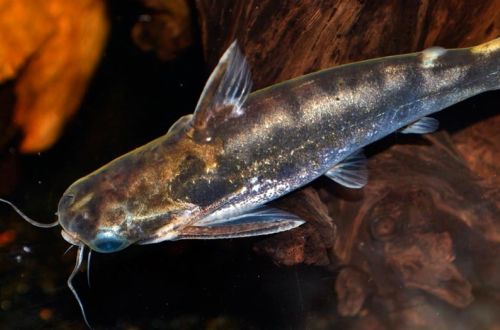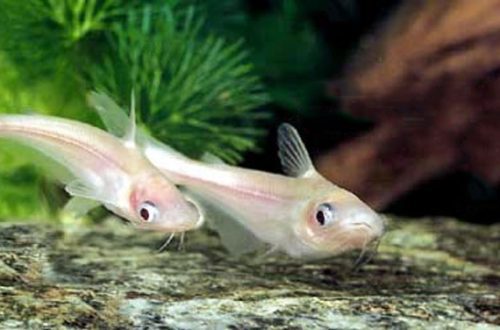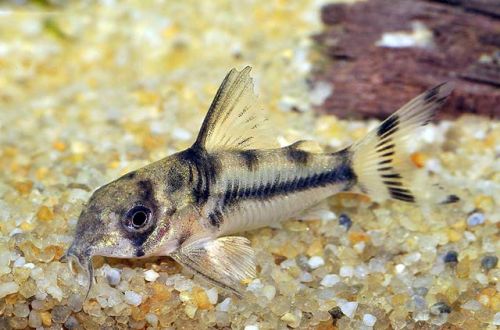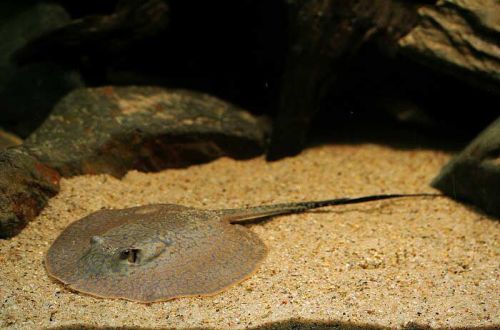
Centromokhl
Centromochl, scientific name Centromochlus macracanthus, belongs to the family Auchenipteridae (Occipital catfishes). This catfish is not often seen in amateur aquariums. It does not look too expressive and also leads a nocturnal lifestyle. The advantages include simplicity in content.

Contents
Habitat
It comes from South America from the upper basin of the Rio Negro from the territory of the Brazilian state of Amazonas. It inhabits sections of rivers with a slow flow, floodplain lakes, backwaters, where it hides at the bottom among numerous snags. The water is dark due to the abundance of dissolved tannins released during the decomposition of plant organic matter, but at the same time it is quite transparent.
Brief information:
- The volume of the aquarium – from 100 liters.
- Temperature – 22-28°C
- Value pH — 4.0–7.0
- Water hardness – 1–10 dGH
- Substrate type – rocky or sandy
- Lighting – subdued
- Brackish water – no
- Water movement is weak
- The size of the fish is about 7 cm.
- Food – any food
- Temperament – peaceful
- Content alone or in a group
Description
Adults reach a length of about 7 cm. The fish has a torpedo-shaped body with a rounded head. Unlike many other catfish, this species does not rely on the organs of touch – whiskers, but on sight. The eyes look quite large in comparison to the proportions of the body. The covers are soft leathery, the only means of protection, in addition to a secretive way of life, are sharp spikes, which are modified first rays of the fins. The coloration is inconspicuous gray with dark spots, the abdomen is light. Sexual dimorphism is weakly expressed, there are no obvious visible differences between male and female.
Food
An omnivorous species, will accept most popular dry, frozen and live foods of suitable size. Able to feed throughout the water column, and not just at the bottom. Young fish should be fed after the lights are turned off. It is noted that after acclimatization, it can appear for feeding in the daytime.
Maintenance and care, arrangement of the aquarium
The optimal size of the aquarium for a group of 3-4 fish starts from 100 liters. Keeping will not cause problems if the water quality is maintained at the right level within acceptable temperature and pH/dGH ranges and the catfish are provided with a suitable habitat with numerous shelters. There is no need to adjust the lighting, make it muffled, Centromohl will wait out the daylight hours in a secluded place. Otherwise, the design is arbitrary, selected at the discretion of the aquarist or based on the needs of other fish.
The stability of the aquarium ecosystem will largely depend, along with the necessary maintenance procedures, on the correct choice of equipment and its smooth operation.
Behavior and Compatibility
Peaceful shy fish, in case of danger, will certainly hide in its shelter. As neighbors, you should choose only species similar in size and temperament. It can live both alone and in the company of relatives. Intraspecific conflicts were not revealed, although if there is a lack of space, competition for a suitable site on the bottom is possible.
Breeding / breeding
At the time of writing, there is a lack of information about the successful breeding of this type of catfish. This is largely due to its low prevalence in amateur aquariums. It is assumed that all representatives of the family Auchenipteridae (Occipital catfishes) have the ability of internal insemination. The female can store separately the seed of males and unfertilized eggs for a long time. When the external environment becomes favorable, spawning occurs.
Fish diseases
The cause of most diseases is unsuitable conditions of detention. A stable habitat will be the key to successful keeping. In the event of symptoms of the disease, first of all, the quality of the water should be checked and, if deviations are found, measures should be taken to correct the situation. If symptoms persist or even worsen, medical treatment will be required. Read more about symptoms and treatments in the Aquarium Fish Diseases section.





